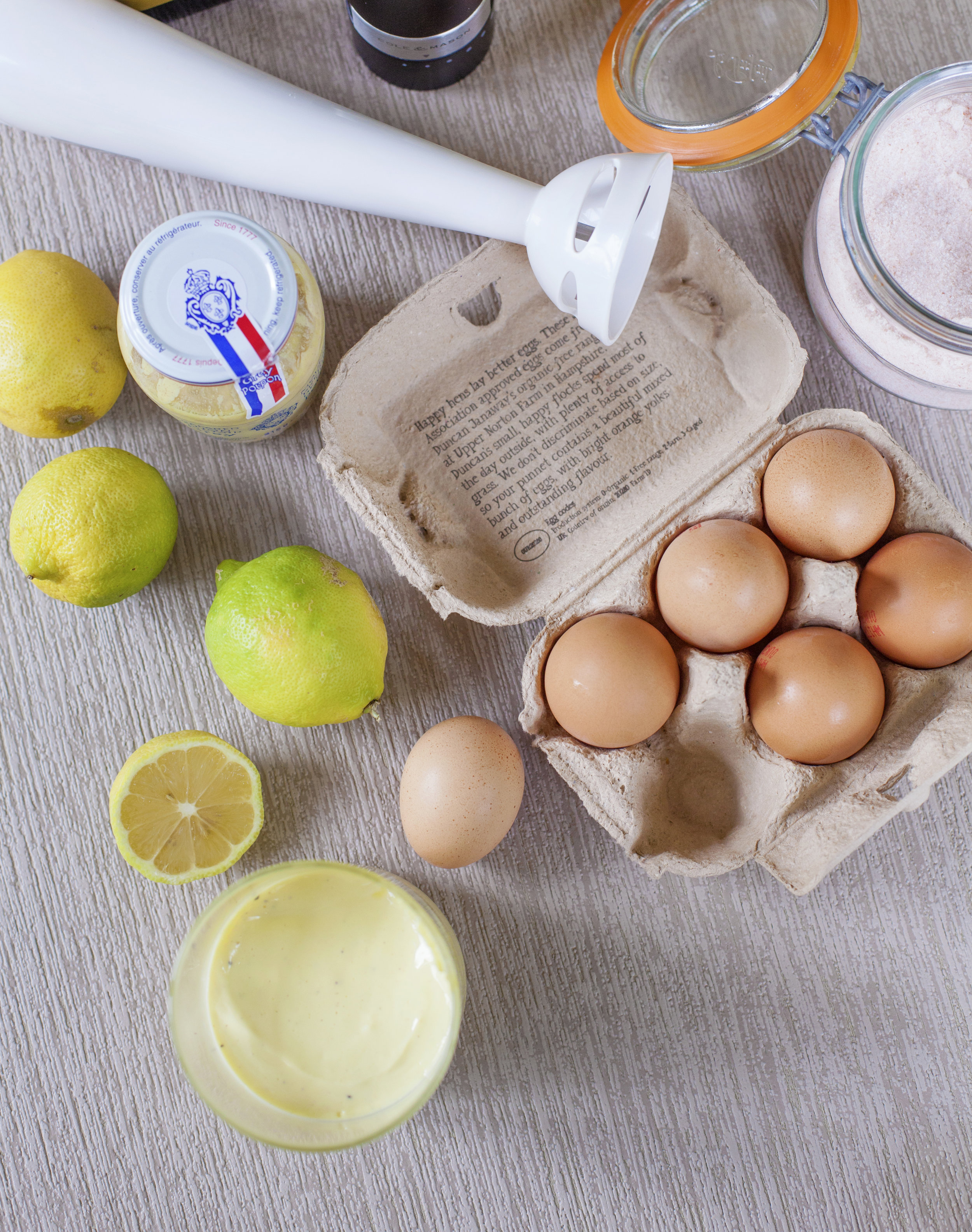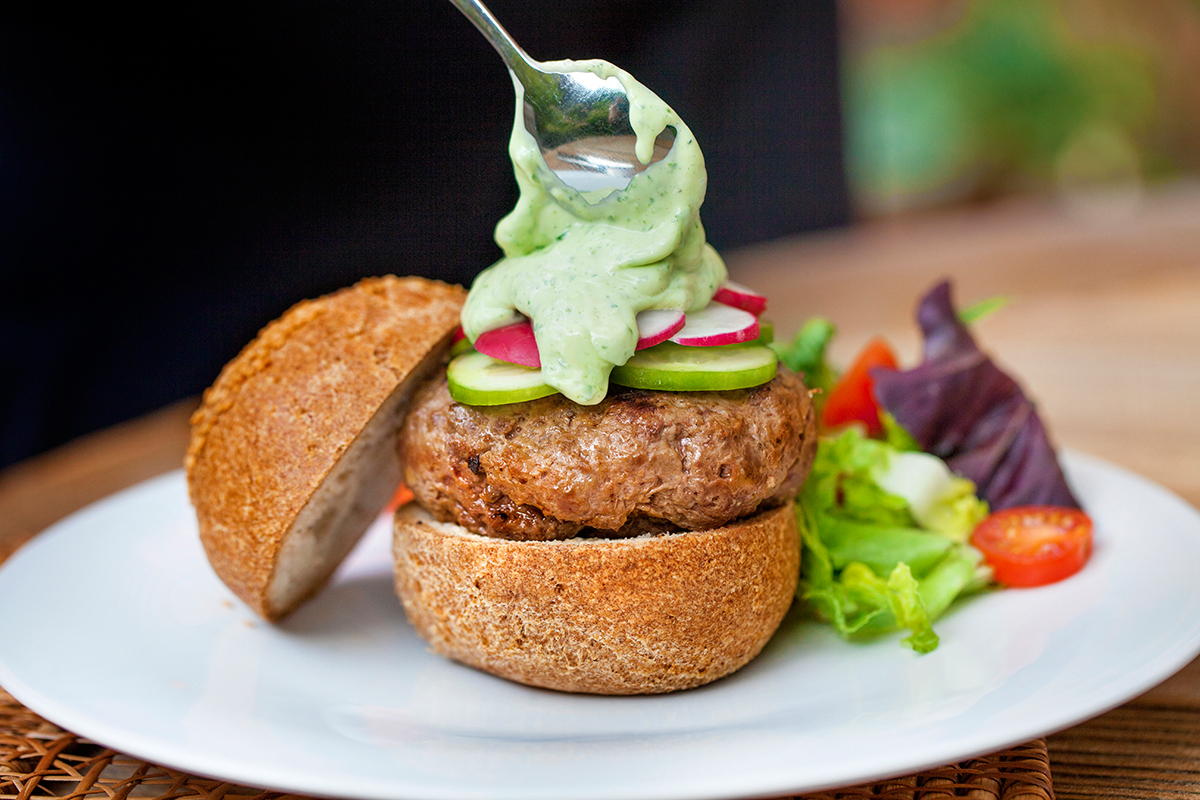Vegetarian Sausages (Makes 12 large sausages - allow 2 sausages per serving)
Ingredients
600g vegetarian Lancashire cheese, crumbled or grated (I coarsely grated mine in a food processor)
4 large spring onions, finely chopped
165g organic ground almonds
20g organic milled flaxseed
15g green banana flour
1 tbsp Marigold organic bouillon powder
2 tbsp fresh thyme leaves, finely chopped
2 tbsp fresh flat leaf parsley, finely chopped
3 large organic eggs, lightly beaten
Sea salt (about 1½ tsp) and freshly ground black pepper (about ¾ tsp)
Olive oil - for frying
Instructions
Put the grated cheese, spring onions, ground almonds, ground flaxseed, banana flour, bouillon powder and herbs into a large mixing bowl and mix everything together well.
Add the beaten eggs and a generous amount of seasoning, then using a fork or your hand bring the mixture together so it binds into a soft cheesy dough-like consistency.
Cover the bowl with cling film and set aside to chill in the refrigerator for a couple of hours.
When the sausage mixture is thoroughly chilled, form into 12 large sausages - about 7.5cm (3”) long, weighing approximately 85g each.
Pour a large glug of olive oil into a large non-stick frying pan and set it over a high heat until the oil is really hot. When the surface of the oil starts to shimmer shallow-fry the sausages until deep golden brown and crispy on all sides, about 5-6 minutes. Drain the cooked sausages on paper kitchen paper.
Serve hot with the creamy cauliflower mash, red wine & onion gravy and peas for a low-carb, vegetarian ‘twist’ on a favourite British classic.
Red Wine & Onion Gravy (Serves 4)
Ingredients
1 tbsp olive oil
2 large onions, finely chopped
1 tsp coconut palm sugar
1 tbsp green banana flour
200ml vegetable stock, made with 1dsp Marigold organic vegetable bouillon powder
200ml red wine
1 tbsp Clearspring tamari (soy sauce)
1 fresh bay leaf
Sea salt and freshly ground black pepper
Instructions
Heat the olive oil over medium-high heat in a large pan. Add the onion and coconut palm sugar to the pan, then cover and cook, stirring occasionally, for 4 minutes or until beginning to brown. Reduce the heat to medium/low and continue to cook with the pan lid on for another 15 minutes, stirring from time to time, until the onion is deep golden brown.
Add the banana flour and stir over the heat for another minute to incorporate, then gradually stir in the stock and wine.
Bring to the boil, stirring continuously until the sauce has thickened, then turn the heat back down to low.
Add the tamari and taste check. Season with a very little sea salt (only if you think it needs it) and some freshly ground pepper
Add the bay leaf (or thyme sprig) and gently simmer for another 20 minutes. Remove the bay leaf.
Serve this intensely flavoursome gravy really hot with sausages and other vegetarian savoury dishes.
Creamy Cauliflower Mash (Serves 4)
Ingredients
1 large head of cauliflower, trimmed and cut into florets
1 fresh bay leaf
100g full-fat soft cream cheese (I used Longley Farm)
Generous pinch of freshly grated nutmeg
Sea salt and freshly grated black pepper
Instructions
Boil a kettle of water.
Place the cauliflower in the top half of a steamer with the bay leaf tucked in-between the florets.
Pour the boiling water from the kettle into the bottom half of the steamer, add some sea salt then bring back to the boil. Steam the cauliflower with the pan lid on for about 8 minutes, until it is cooked through.
Tip or spoon the cauliflower into a large bowl and allow it to cool down for a couple of minutes - this will let the steam evaporate and make for a drier mash. Remove the bay leaf.
Using a stick blender or food processor, whizz the cauliflower into a rough puree. Add the salt, pepper, nutmeg and cream cheese then briefly process again into a creamy mash consistency.
Put the cauliflower mash into a clean pan and gently re-heat, stirring from time to time so it doesn’t catch on the bottom of the pan.
Serve hot as a delicious low-carb alternative to mashed potato.
Notes
Keep the formed ‘sausages’ really cold (in a refrigerator) until you’re ready to start cooking them. This will ensure that they stay sausage-shaped in the cooking process i.e. cook to a crispy exterior before the cheese gets a chance to melt and they become misshapen. For the same reason, it is important not to overcrowd the pan because this lowers the temperature of the oil. You want your sausages to fry quickly in the hot oil, not semi-steam, which can cause them to ‘squidge' out of shape as you’re turning them over in the pan (also causing them to absorb more oil).
The uncooked sausage mixture will keep for several days in a refrigerator. With this recipe being hot-off-the-press I haven’t tried freezing it yet but I think that would probably work too.
If it looks like a sausage, tastes like a sausage and behaves like a sausage it probably IS going to be mistaken for a non-vegetarian sausage! Apart from the difference in colour when you bite into them (pale gold cheese colour rather than cooked-meat-grey) I’d defy anyone to distinguish the difference between these veggie sausages and meat ones, especially when cold. Cooked leftovers, eaten next day straight from the fridge, still had their crispy exterior intact and tasted so ‘porky’ I was genuinely gob-smacked! Which means I’ve also developed a brand new picnic food to go, which is an absolute god-send for when Sarah and I are doing full-day weddings on the move #happy
If you want a smooth gravy i.e. without onion bits, strain through a fine sieve into a clean pan before re-heating and serving.
If you think the finished gravy is a little too thick just add more water to thin it out to your liking.
I used steamed cauliflower to create a creamy ‘mash’ that’s very similar to - albeit a lighter, low-carb version of - mashed potatoes. Sweet potatoes, carrots, celeriac, swedes, parsnips and turnips - either alone or in combination - all make a good alternative to potato mash. Just be wary of stacking up the carbohydrates when you eat the sweeter root vegetables i.e. parsnips and sweet potatoes.
Carbohydrates 11g Protein 40g - 2 sausages per serving
Carbohydrates 13g Protein 1g - per serving of gravy
Carbohydrates 12g Protein 6g - per serving of creamy cauliflower mash














































